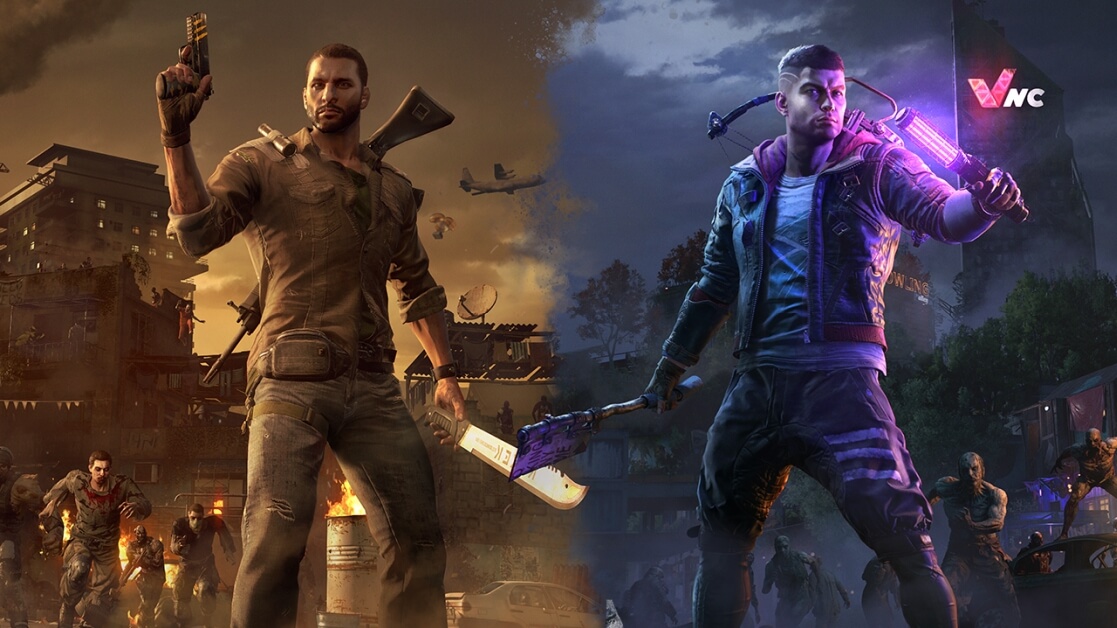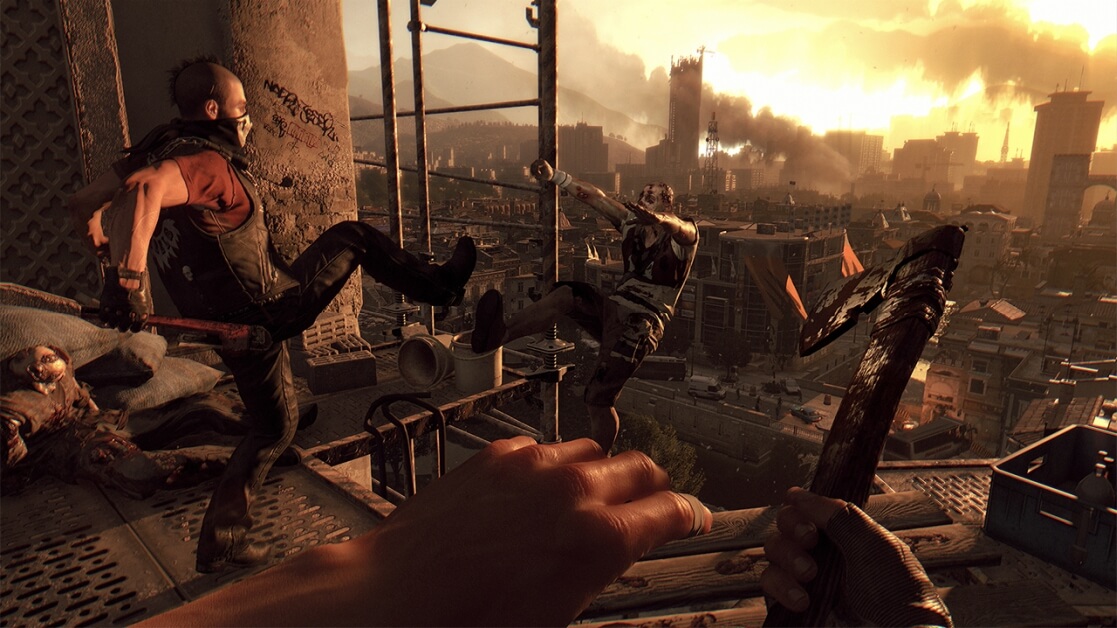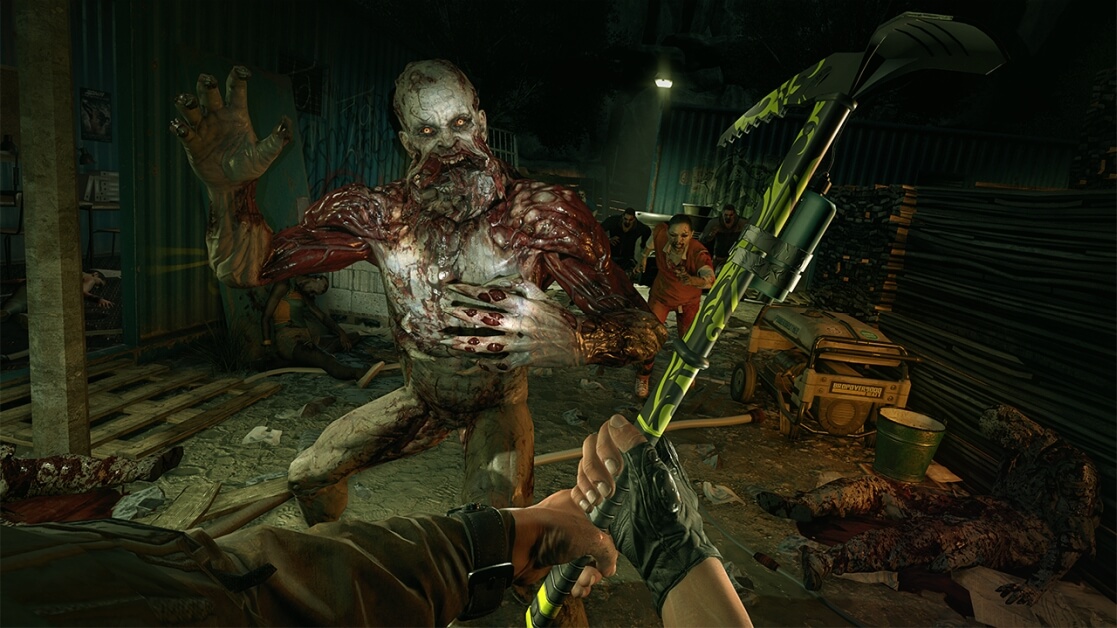
Dev Blog #11 - Dying Light behind the scenes moments
Hi, it’s Tymon here,
I’m going to be sentimental again today. This time, I’ll cast my mind back a little further, to over 10 years ago, when I was still young and beautiful.
As you know we recently reintroduced Dying Light Standard Edition, which is still available for a couple more days at an uber-attractive price on Steam and Xbox Store. In preparation for this, I started playing the game again, and it brought back many wonderful memories. What a great blast from the past! I would like to let you in on the fun we had working on the first Dying Light by inviting you to take a peek behind the scenes.

In my recent solo playthrough, I explored our take on open world parkour and it reminded me of how fresh it felt in the wide field of FPP genre. The mastermind behind Dying Light’s approach to traversal is my friend, Bartosz “Glova” Kulon. Bartosz, together with the gameplay and animation teams, pulled off one hell of a task, making sure the movement is smooth – it sure took a long, long time until everybody was happy with it.
When I joined Techland over a decade ago, parkour was already in place. Adrian “Pyza” Ciszewski, who was our Creative Director back then, and Glova himself – already a Senior Gameplay Programmer – had a chuckle on my behalf when I tried to use A on a pad to jump in Dying Light (like in every other action game I played before). It took me ten minutes, or maybe even more, to realize that in this game, jump is actually bound to the right bumper – for a reason, as I later found out, because it allows you to jump and still keep your right thumb on the stick, to control the camera as well as the direction of the jump itself. This didn't stop the guys mercilessly roasting me from the sidelines. But it was already then that I realized Dying Light would become something new and unique to the players, and the smooth traversal was what convinced me.

As far as I know, the beginnings of parkour were totally different. Level Designers used to place special “hooks” in the world, which were the spots a player could hold on to when moving around Harran. And it worked all right, but the team kept adding more and more of them (at one point there were several thousand on the map) to increase the freedom of movement. It was Bartosz Kulon who finally stopped the hook invasion and came up with an alternative plan. The new idea for parkour programming was based on the game itself analyzing the geometry in front of the player and letting it decide whether a given ledge is reachable. It was a game changer, for sure.
Playing Dying Light today, I’m still amazed how good the game looks almost 10 years after it was released! I remember the day I first experienced the quality of these graphics. Maciej “Keoz” Jamrozik, our Technical Art Director, just introduced a new lighting model to the game – and he had been working on it on the side, keeping his cards close to his chest. During the morning stand-up meetings, he used to say that he had been tinkering with the chaparrals, or the bushes, or the vegetation in general (obviously, I had to google the chaparrals, but for a good chunk of time I thought it's some tech-lingo for... a rendering technique perhaps?). Then, one day he comes and says that he’s uploaded the plants already, oh, also a new lighting system, by the way. When I launched the game, I paid zero attention to the damn chaparrals, but I was blown away by the lighting, how beautiful Harran looked, and I was especially amazed by the sunset. And alright, the plants were nice too, I guess.

Working on combat was an emotional rollercoaster. Obviously, the fights in Dying Light are very brutal, bloody, and immersive. To have that impact reflected in the game, we recorded a lot of combat moves in mo-cap, and I cannot say that no developers were harmed in the process. The aforementioned Pyza Ciszewski once set out to show the animators how he wanted the heavy, curb-stomping kicks to look like, demonstrating them on a mattress and… he broke his leg. It might be funny now, but believe me, no one was laughing back then. In hindsight, it was probably karma for the "jump with A button" roast.
What was genuinely funny, though, were the reactions of the journalists during E3 in 2013. We prepared a demo of Dying Light, which consisted of a daylight playthrough, plus literally only a couple of minutes of nighttime. It wasn’t anything out of the ordinary, the game was still in production, but we wanted to show it to a couple of chosen editors. Our guests could run around at night, evading Volatiles during a chase, but it turned out to be a bit too much for some. There were a couple of journalists who threw down their pads mid-playthrough, saying that the experience was too scary and intense for them. Did we mind? Not much, I suppose, because we turned up the night difficulty even more for the final product.

Dying Light is defined by the physical parkour, scary nights, and immersive combat. But it also has a couple of secrets up its sleeve. Some of them are linked to easter eggs, of course. The driving force behind those was none other than our Lead Level Designer Piotr “SiCK” Pawlaczyk, who personally loves uncovering them in every game he plays, so obviously he wanted us to have some in Dying Light. He managed to negotiate with the higher-ups to let him organize a couple of so-called Easter Egg Days towards the end of production, so that the team could focus on cooking up and implementing some surprises.
One of the fan-favorite easter eggs was Korek Machete, named after our then Optimization Lead and current Senior Producer, Kornel “Korek” Jaskuła. Originally, he created this machete for the QA testers, so that they could have a one hit kill weapon. Together with Piotrek, they concocted a plan to also give it to the players – by hiding it on the map, in a box that you have to kick 76 times to open. Why 76 times? Good question, but no fancy answer, I’m afraid – it was the first number Korek came up with (literally, when he was asked by SiCK how many kicks were needed, the quote was "Dunno, 76?"). Thank heavens he didn’t think of a larger one…
As I’ve mentioned, working on the first Dying Light was a real blast. The entire team had fun, we were challenged, and it definitely tested our creativity. We came up with a lot of unique ideas, which made it easy to continue the adventure in Dying Light: The Following, and later in Dying Light 2 Stay Human. I wholeheartedly encourage you to play the first game, it’s a great entry point to the franchise and a neat lead in to the second release that we are currently supporting – and the Dying Light universe in general.
Good night, good luck and… Stay Human!
